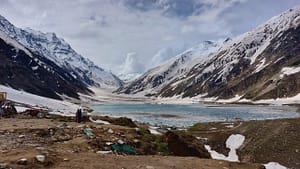Development objective
In 2010, an assessment of existing UPA activities in Accra, in comparism with other selected cities namely: Nairobi, Lima, and Bangalore.was initiated. These cities showed a diversity of UPA systems. The case studies:
- present up-to-date information on the presence, forms and impacts of urban agriculture in the cities,
- pilot test a defined data collection methodology, in order to facilitate more systematic assessment in other cities in the future
- provide better understanding of the constraining and facilitating factors for development of successful UPA programs
- make recommendations for city and country governments and donor organizations
Study Methodology
The study will identify and measure the presence among and contribution of UA to the livelihoods, nutrition, health status and capacity to adapt to climate change of poor urban households. Data will be collected among 600 low-income producer households in various neighborhoods in the city as well as among 300 non-producing households serving as a control group.
This study will seek to assess the contribution of different types of UA to poor households through coping strategy and income from selling produce. Thus focusing on households as units of study that are involved primarily in growing for home consumption (e.g. intra-urban backyard gardening, community gardening) or primarily in earning income from agricultural sales to markets (through for example commercial horticulture or dairying in larger urban or peri-urban areas). Therefore,this focus on low-income households excludes large-scale commercial (peri) urban agriculture enterprises from the study.
To stratify the sample to capture this variation, a sample will be drawn from administrative units (AU) of the city located along a transect from the inner city to the peri-urban interface.
Activities
City context and anatomy
Description of the city context would be focused on collection and analysis of the following:
- Secondary demographic data on day and night population size, growth rate over past 50 years, sources of in-migration, composition of population by sex and age, composition by ethnicity.
- Secondary administrative data on city government, with hierarchical levels, competencies, jurisdictions, authority vis a vis national government. Special attention will be given to how the “city boundary” is determined administratively and how jurisdictions are divided with the peri-urban area beyond the official boundary.
- GIS-supported mapping of the city structure and administrative units onto city geography and major types of land-use, including approximate distribution of known areas and types of agriculture.
- Secondary socio-economic data on overall and disaggregated poverty levels, estimates of formal and informal employment levels disaggregated by sex and age and type of employment, if possible, also by administrative unit.
- Official statistics and secondary Research and Development literature on urban agriculture to make estimates of numbers of total and administrative unit populations involved in agriculture.
- Regional climate change scenarios and their expected impacts on the target city.
Visit to selected Target Settlements
To inform them about the survey and its backgrounds, get to know their concerns and recommendations and to get their support for the survey.
Data collection in the target settlements, operational methods and tools
Once administrative units (AUs) and target settlements (TSs) have been selected the following data will be collected:
- Socio-economic characterization of producing and non-producing households in selected AUs/TSs on the inner-urban to peri-urban transect,
- Assessment of food security , nutritional status of households on the intra-urban to rural continuum and estimates of contribution of cash savings from UA on household food security.
- Income, expenditure and livelihood data on UA.
- Sustainable impacts of urban agriculture on households and the environment.
- Constraining and facilitating factors for UA development.










